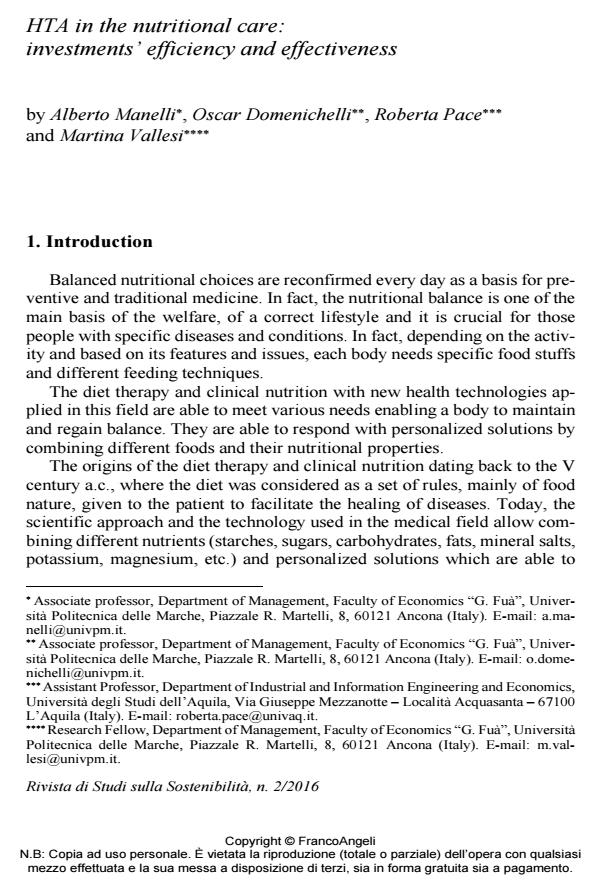HTA in the nutritional care: investments’ efficiency and effectiveness
Journal title RIVISTA DI STUDI SULLA SOSTENIBILITA'
Author/s Alberto Manelli, Oscar Domenichelli, Roberta Pace, Martina Vallesi
Publishing Year 2017 Issue 2016/2
Language English Pages 12 P. 57-68 File size 159 KB
DOI 10.3280/RISS2016-002006
DOI is like a bar code for intellectual property: to have more infomation
click here
Below, you can see the article first page
If you want to buy this article in PDF format, you can do it, following the instructions to buy download credits

FrancoAngeli is member of Publishers International Linking Association, Inc (PILA), a not-for-profit association which run the CrossRef service enabling links to and from online scholarly content.
Health Technology Assessment (HTA) in spite of being a relatively recent methodological phenomenon has become increasingly important tool for the policy makers to bridge the gap between research and policy making. This work starts with an evaluation of the logic behind the adoption of HTA process for policy making, including features and advantages of the process. Subsequently, this study presents the risk related to the investments in health sector, from the different prospectives such as: balance among effectiveness, efficiency and economy; and role of the scarcity of available resources. Finally, the explanation about the necessity to evaluate the ability of investments in the health technology in nutritional care making a synthesis between the different variables to support the operations of the policy makers in a view to create added value and to contain costs.
Keywords: Health technologies, nutrition, evaluation, efficiency, effectiveness, value
Alberto Manelli, Oscar Domenichelli, Roberta Pace, Martina Vallesi, HTA in the nutritional care: investments’ efficiency and effectiveness in "RIVISTA DI STUDI SULLA SOSTENIBILITA'" 2/2016, pp 57-68, DOI: 10.3280/RISS2016-002006